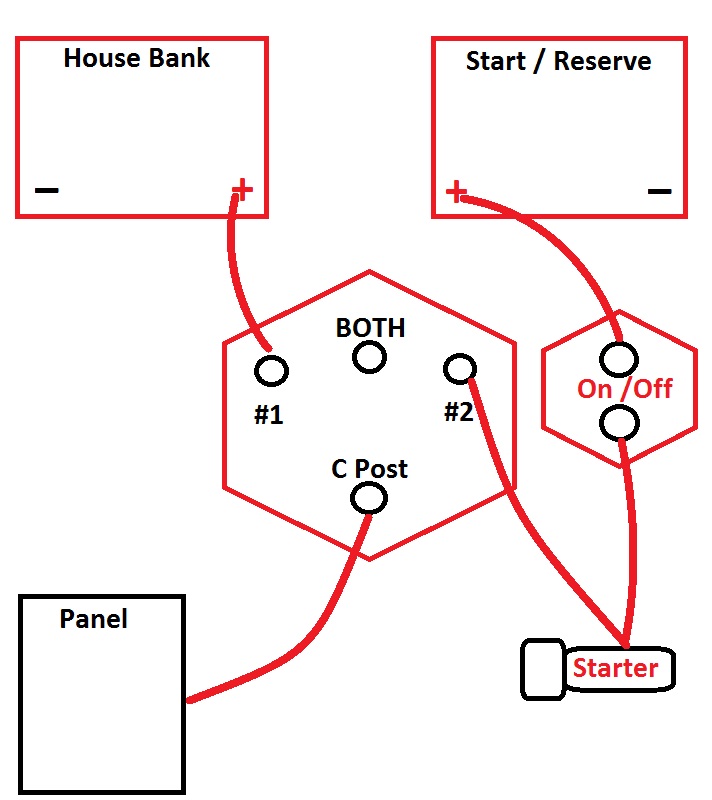Long post (sorry), academic discussion (for nerds like me)
Just pull the neg off one set and the pos off the other. This will do a much better job of keeping them in balance.
First, thanks, Mainesail, I appreciate and value your input on this. Please excuse if I go on, as there is and academic interest in the topic in addition to the practical.
I hear what you are saying, but I'm not sure I entirely agree, or perhaps I don't understand.
In order for me to parallel the batteries and pull the plus and neg off opposite ends of the bank, I'd need to add a cable from the forward location. Not so bad. But, there will still be two "inside" batts, and two "outside;" certainly not as badly out of balance as before, but not completely unbalanced either. No? But in practical terms, I can see intuitively that this seems close enough.
I drew a circuit that included the resistance of the cables, and modeled the batts in charge mode simply as current sources sharing the available charge current, just to evaluate the individual battery terminal voltage as a function of charging current and wire resistance. For the conventional parallel circuit pulling the plus and minus from the opposite ends of the bank you see a symmetrical imbalance, outside to inside, but only a very small difference: at a total charging current of 40A and a regulation voltage of 14.4V from the post of Battery 1 to the charging system ground, you see 14.3088V across batteries 1 and 4, and 14.3064 across 2 and 3. The difference is, I think, negligible. The important observation is that the regulation voltage is low, because of the loss in the return path from the batteries - all due to wire resistance. In the analysis I used 4 AWG and lengths of 6' and 1/2' for the long and short jumpers; long ones were necessary due to the forward location of two of the batteries. The lesson is, I guess, is to adjust the regulation point so that you get 14.4 (or your chosen absorption voltage)
across the terminals of the battery. This might mean increasing the set-point measured from the sense to the regulator ground by 0.1V or more ('though I haven't done the math).
From an academic perspective, the scheme of star-wiring all the batteries to the plus and minus bus bars has a lot of appeal. Assuming a robust enough bus bar, and good crimp connections for the cable lugs, , one could have superb balance among the batteries even with minimally adequate wire size, since they are all the same gauge and length. In addition, once could isolate a failed battery very quickly, since only a single connection need be broken to do so, without having to move or reroute other paralleling connections (not that that's an occurrence anticipated at other than infinitesimal probability). Finally, and perhaps most importantly, the regulator sense line being attached directly to one of the battery plus terminals would represent very closely the battery voltage of all of the batteries, assuming that they are identical batteries of same age and use (as they are in my case); there would be no voltage offset in charge sensing as there would necessarily be in the conventional paralleling scheme. And this is the greatest advantage. However, we see that the voltage drop in the return path dominates this analysis.
Conclusions:
a. conventional paralleling is fine, as long as you pull plus and minus from opposite corners of the bank, per MS's advice;
b. absorption set point should be set based on a measurement across the battery terminals, to take out the return path drop.
c. a thought - perhaps rotate the batteries, inside to out, annually.
Regards,
jv





